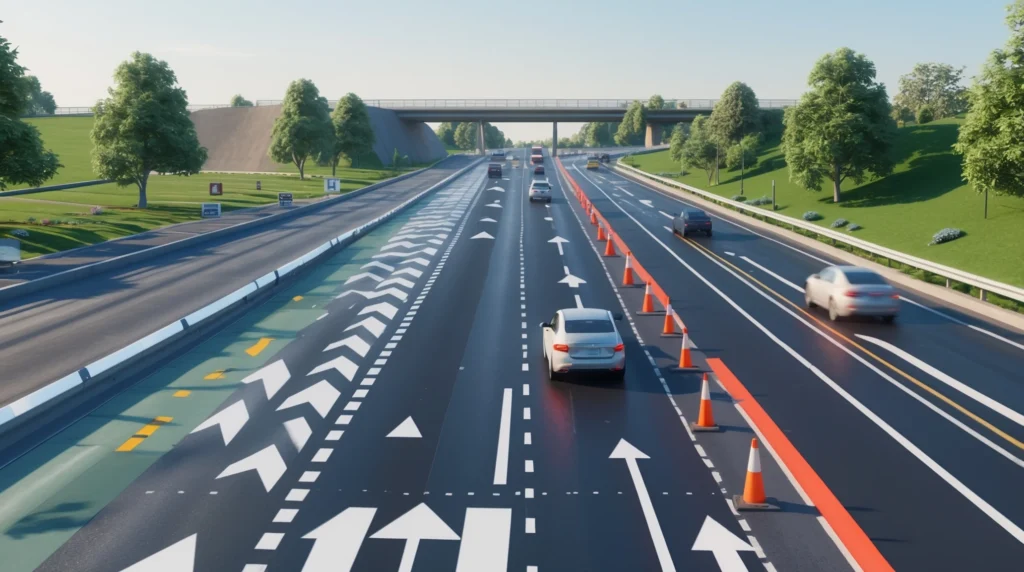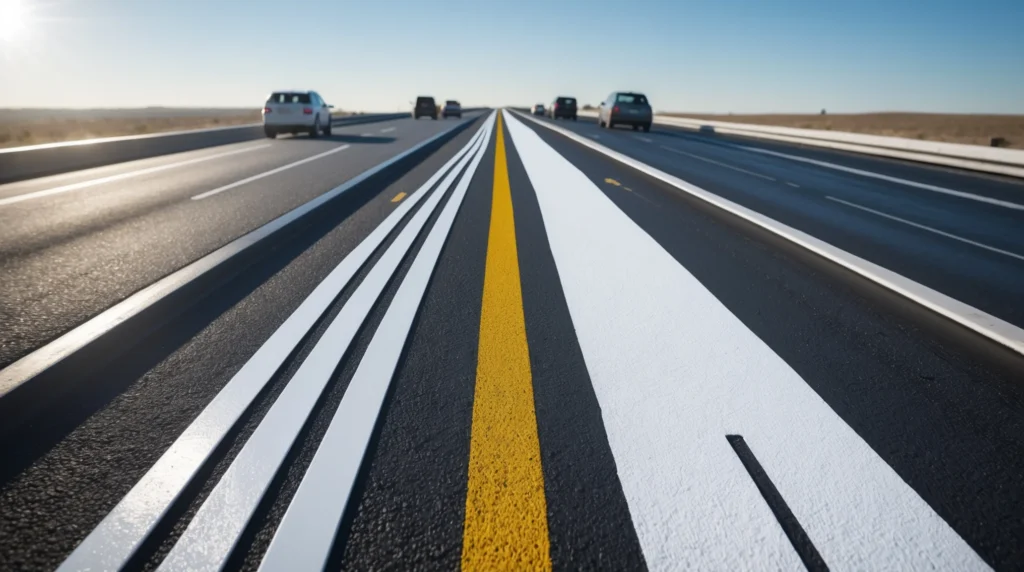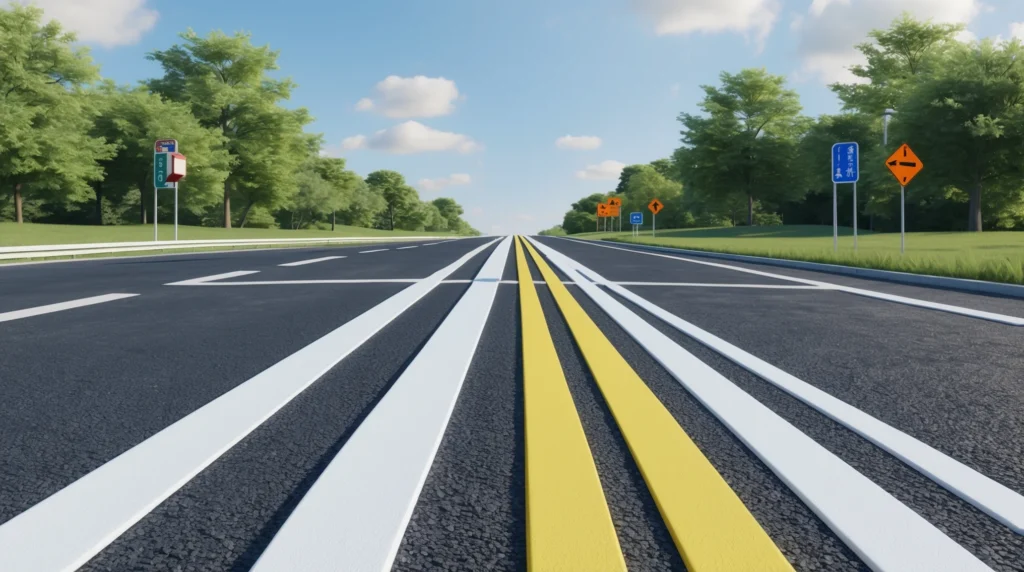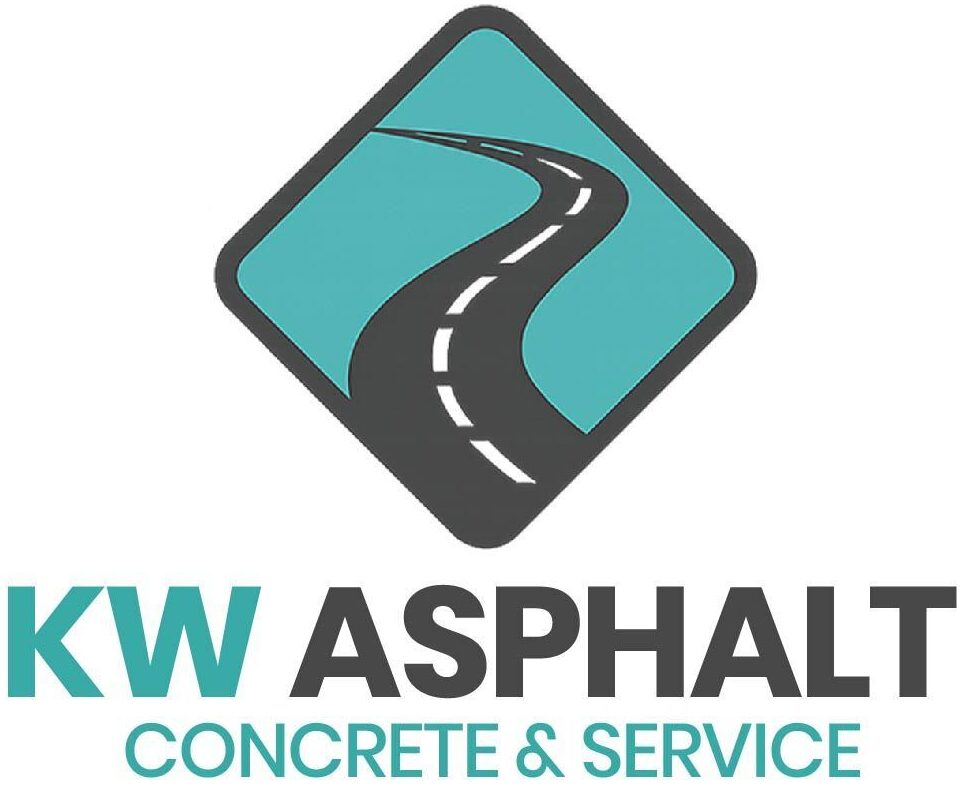Why Road Markings Matter for Safety and Navigation
Every driver depends on clear road markings to stay safe. Pavement striping helps guide traffic, mark lanes, and protect pedestrians at crosswalks. Without visible lines, confusion and accidents increase. That is why many cities are moving from standard road marking paint to thermoplastic pavement markings, which last longer and perform better. They improve both safety and navigation for drivers, bikers, and walkers alike.

Understanding the Role of Thermoplastic Pavement Markings
Thermoplastic markings are a type of durable road marking that bonds strongly to asphalt or concrete. Unlike simple pavement paint, they are applied hot and contain special materials like glass beads for reflectivity. The temperature of the asphalt surface also plays an important role if the asphalt isn’t hot enough, the markings may not bond properly, while the right heat ensures a strong, long-lasting finish. This makes thermoplastic markings easier to see at night and during poor weather. From highways to car park lining, they are now one of the most trusted solutions for traffic markings.
Common Applications of Thermoplastic Road Markings
Thermoplastic paint for road marking can be used in many ways:
- Thermoplastic line markings for lanes on highways.
- Thermoplastic crosswalks for pedestrian safety.
- Thermoplastic car park lining for organized parking spaces.
- Road striping and traffic markings for intersections and curves.
Because they last longer than standard road marking paint, they save cities and contractors money over time.
Key Materials Used in Thermoplastic Marking Paint
Thermoplastic pavement marking material is made from a mix of:
- A thermoplastic material that hardens quickly when cooled.
- Glass beads for night visibility.
- Binder resins that hold everything together.
- Pigments such as white, yellow, red, thermoplastic, and even green for special zones.
These components make the thermoplastic coating strong, reflective, and weather-resistant.
Methods of Applying Thermoplastic Line Markings
There are several ways to apply thermoplastic road paint:
- Hot-applied thermoplastics are melted and poured onto pavement.
- Spray application for large areas.
- Extrusion method for long, straight lines.
- Torch application for preformed thermoplastic sheets.
- Road surface preparation to make sure the paint bonds well.
Each method ensures markings stay in place, even under heavy traffic.
Performance Benefits of Thermoplastic Coating
Thermoplastic striping paint is chosen for its performance. It provides:
- Reflectivity with glass beads for night driving.
- Skid resistance that makes crosswalks safer.
- Weather resistance against rain and heat.
- Durability and a long lifespan compared to asphalt marking paint.
Drivers benefit from better visibility, and cities benefit from reduced maintenance.
Preformed Thermoplastic Road Marking Options
Sometimes roads need quick installation. Preformed thermoplastic road marking sheets and rolls are ready-made and heated into place. They work well for symbols, arrows, crosswalks, and bike lanes. Preformed thermoplastic installation is faster, requires less equipment, and is ideal for high-traffic areas that cannot be closed for long.

Comparing Thermoplastic Pavement Markings with MMA Pavement Markings
Both thermoplastic and MMA pavement markings are popular. MMA road markings use a cold plastic system, while thermoplastic requires heat. MMA paint is great for special uses, but thermoplastic is more common for highways and parking lots. Compared to traditional products, MMA solutions cost more but may work better in very cold climates. Thermoplastic, however, offers a balance of durability, skid resistance, and night visibility, making it the standard choice for most traffic markings.

Industry Standards and Regulations You Should Know
Thermoplastic road marking material is required to meet certain safety standards. Agencies like the DOT standards, MUTCD (Manual on Uniform Traffic Control Devices), and the Federal Highway Administration (FHWA) set rules for colors, reflectivity, and placement. ASTM standards for pavement markings also ensure quality. Following these guidelines keeps markings consistent, safe, and reliable for drivers everywhere.
Why Choose kw asphalt for Thermoplastic Pavement Markings in Greenville, SC
When it comes to professional applications, kw asphalt delivers trusted results. Their team uses the right thermoplastic striping material, follows MUTCD and DOT standards, and ensures every line is precise. Whether it’s a small parking lot or a major highway project, they handle thermoplastic traffic paint with care and expertise. Families and businesses in Greenville, SC, can count on their professionalism and experience.
Final Thoughts on Choosing the Right Road Marking Solution
Choosing the right pavement marking is about safety, cost, and long-term value. Thermoplastic pavement markings stand out for their strength, reflectivity, and long lifespan. They are more reliable than basic road paint and help drivers stay safe day and night. For cities, businesses, and contractors, investing in thermoplastic is a smart choice that pays off in both performance and durability.
Ready to upgrade your road or parking lot markings? Contact KW Asphalt today for expert thermoplastic solutions that last.
